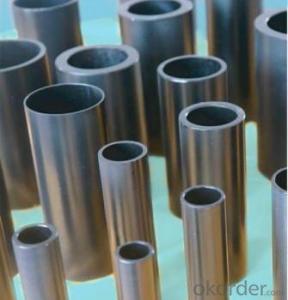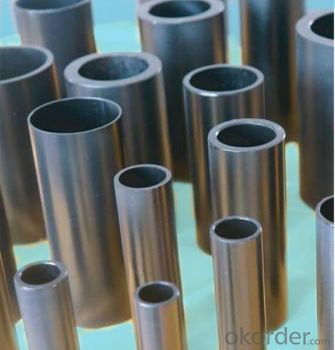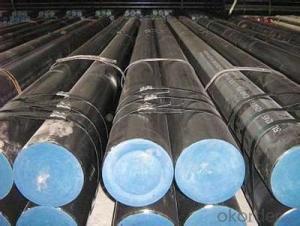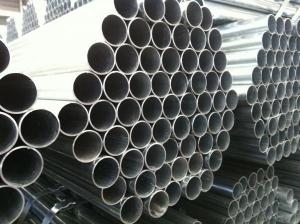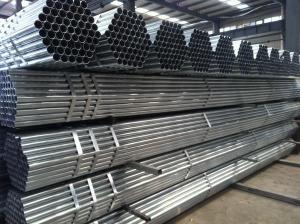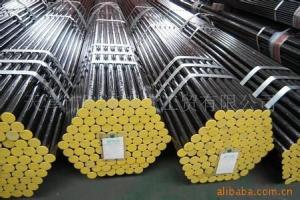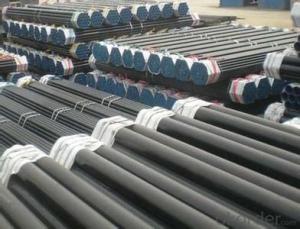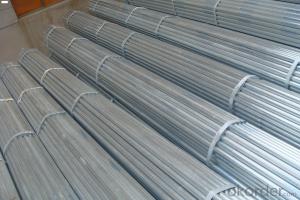Galvanized Steel Circle Pipe Q345 Grade
- Loading Port:
- Tianjin
- Payment Terms:
- TT or LC
- Min Order Qty:
- 100 m.t.
- Supply Capability:
- 1000 m.t./month
OKorder Service Pledge
OKorder Financial Service
You Might Also Like
Galvanized Steel Circle Pipe Q345 Grade
Description for Galvanized Steel Circle Pipe :
Type | Galvanized Steel Circle Pipe |
Steel Grade | Q345,Q195,215,Q235, |
HRB400E,HRB500E ,Q235 , Q195 | |
Size | DIA 13-25.4mm, 18-25.4mm,25.4-34mm,34-50.8mm,50.8-79.2mm
|
Thickness | 0.5-1.5mm,1.5-2.0mm,0.7-2.0mm,0.8-3.0mm,1.0-3.0mm |
Application | Building/project construction |
Packing | 5.5mm-10mm:packing In coil. 10mm-32mm:in bundle. |
MOQ | 300tons ( trial order 100tons acceptable ). |
Capacity | 150000tons /month. |
Delivery Time | 15days after the order confirmation . |
Payment | T/T , West Union , Cash , L/C. |
Trade Terms | FOB, CFR, CIF ,EXW |
Trans term | FIO , FILO , FLT |
Datas Chart for Galvanized Steel Circle Pipe :
Content | C% | Mn% | Si% | P% | S% | V% | Ceq% |
HRB335 | 0.17-0.25 | 1.00-1.60 | 0.40-0.80 | ≤0.045 | ≤0.045 | ≤0.52 | |
HRB400 | 0.20-0.25 | 1.30-1.60 | 0.40-0.80 | ≤0.035 | ≤0.035 | 0.05-0.08 | ≤0.54 |
HRB500 | 0.25 | 1.6 | 0.80 | ≤0.045 | ≤0.045 | ≤0.55 | |
HRB500E | 0.20-0.24 | 1.20-1.50 | 0.40-0.65 | ≤0.045 | ≤0.045 | 0.050-0.120 | ≤0.55 |
Main Structure of Galvanized Steel Circle Pipe
l Mechanics Performance
Grade | Technical data of the original chemical composition(%) | |||||||
C | Mn | Si | S | P | Ceq | |||
HRB500 | ≤0.25 | ≤1.60 | ≤0.80 | ≤0.045 | ≤0.045 | ≤ 0.55 | ||
Mechanical Characterics | ||||||||
Yield Strength (N/cm2) | Tensile Strength (N/cm2) | Elongation (%)
| ||||||
≥500 | ≥630 | ≥14 | ||||||
l Mechanics Performance
Grade | Technical data of the original chemical composition(%) | |||||
C | Mn | Si | S | P | Ceq
| |
HRB400 | ≤0.25 | ≤1.60 | ≤0.80 | ≤0.045 | ≤0.045 | ≤ 0.54 |
Physics capability | ||||||
Yield Strength (N/cm2) | Tensile Strength (N/cm2) | Elongation (%)
| ||||
≥400 | ≥570 | ≥16 | ||||
FAQ:
Why should you choose us:
Stable quality ----continous casting hot rolled production techenic, strictly quality control system.
Lower price -------Not the cheapest but the lowest price at the same quality .
Good service -----Satisfactory service within 24hours.
Delivery time ------15-25days for the mass production .
Discount---------------discount base on monthly large quantity purchase in long term.
Picture:
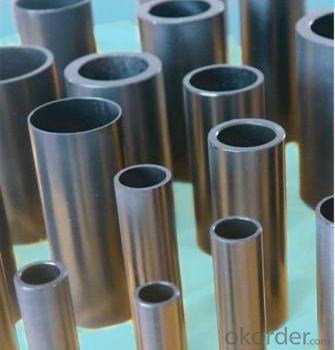
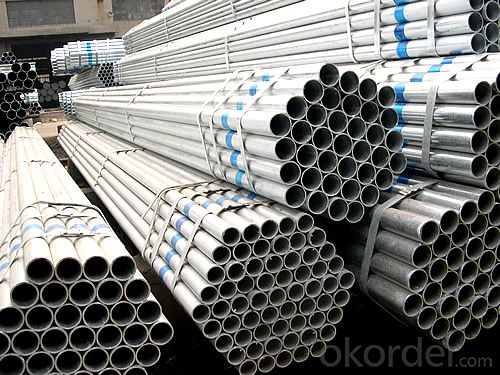
- Q: How are steel pipes used in the manufacturing of automobiles?
- Steel pipes are commonly used in the manufacturing of automobiles for various applications, such as exhaust systems, fuel lines, and structural components. The high strength and durability of steel pipes make them ideal for these purposes, ensuring the safety and reliability of automobiles.
- Q: What are the factors that affect the pressure rating of steel pipes?
- There are several factors that can affect the pressure rating of steel pipes. These include the material and grade of the steel used, the wall thickness of the pipe, the diameter of the pipe, the temperature at which the pipe will be operating, and the type of fluid or gas being transported through the pipe. Additionally, factors such as corrosion, external loads, and installation methods can also impact the pressure rating of steel pipes.
- Q: How do steel pipes handle water erosion?
- Steel pipes handle water erosion well due to their inherent strength and durability. The smooth surface of steel pipes helps to minimize friction and reduce the potential for erosion. Additionally, the corrosion-resistant nature of steel prevents rusting, ensuring long-term protection against water erosion.
- Q: How are steel pipes used in industrial manufacturing processes?
- Steel pipes are commonly used in industrial manufacturing processes for various purposes, such as transporting fluids, gases, and solids, as well as providing structural support. They are used to create pipelines for water, oil, and gas transportation, as well as for conveying materials like ores and grains. Additionally, steel pipes are utilized in machinery, equipment, and infrastructure construction due to their strength, durability, and resistance to high pressure and extreme temperatures.
- Q: Are steel pipes suitable for underground installations?
- Yes, steel pipes are suitable for underground installations. Steel pipes have been widely used for underground applications due to their durability, strength, and resistance to corrosion. They are able to withstand high pressure and extreme temperature variations, making them ideal for transporting various substances such as water, gas, and oil underground. Additionally, steel pipes are highly resistant to environmental factors such as moisture and chemicals, which are commonly found in underground environments. With proper coatings and cathodic protection systems, steel pipes can have an extended lifespan and remain intact even in harsh underground conditions. Therefore, steel pipes are a reliable and suitable choice for underground installations.
- Q: What is the difference between steel pipes and fiberglass pipes?
- Steel pipes are made from a durable alloy of iron and carbon, while fiberglass pipes are composed of a reinforced plastic material. The main difference is that steel pipes are stronger and more resistant to high temperatures and pressure, making them suitable for heavy-duty applications such as oil and gas pipelines. On the other hand, fiberglass pipes are lighter, corrosion-resistant, and have better thermal insulation properties, making them ideal for industries like chemical processing and wastewater treatment.
- Q: How are steel pipes used in the construction of solar power plants?
- Steel pipes are commonly used in the construction of solar power plants for various purposes. They are primarily utilized for the installation of solar panel mounting structures, which require sturdy and reliable support systems. Steel pipes are also used for the construction of infrastructure such as frames, racks, and supports for the solar panels. Additionally, they are employed in the installation of water and coolant systems, as well as for the transmission of fluids and gases within the plant. Overall, steel pipes play a crucial role in providing structural integrity and efficient functionality to solar power plants.
- Q: What are the safety considerations while handling steel pipes?
- When handling steel pipes, some key safety considerations include wearing appropriate personal protective equipment (PPE) such as gloves, safety glasses, and steel-toe boots to protect against potential injuries. It is important to be cautious of the weight and size of the pipes, using proper lifting techniques and equipment to prevent strains or accidents. Additionally, workers should be mindful of the sharp edges and potential for cuts or punctures, ensuring they have a clear and organized workspace to minimize the risk of tripping or falling. Regular inspections of the pipes for any damages or defects are also crucial to prevent accidents and maintain a safe working environment.
- Q: Can steel pipes be recycled after their useful life?
- Steel pipes can indeed be recycled once they have served their purpose. Steel, being an incredibly recyclable substance, can be recycled even in the form of pipes. The recycling of steel pipes entails the collection of used pipes, followed by thorough cleaning to eliminate any impurities, and finally transforming them into fresh steel products. This recycling process contributes to the preservation of natural resources, curbs energy usage, and limits waste generation. Moreover, recycling steel pipes aids in mitigating the environmental repercussions linked to the manufacturing of new steel.
- Q: What is the difference between internal threading and external threading of steel pipes?
- The difference between internal threading and external threading of steel pipes lies in the location and method of threading. Internal threading refers to the process of creating threads on the inside surface of a steel pipe, allowing it to be connected to other components with external threads. On the other hand, external threading involves creating threads on the outside surface of a steel pipe, enabling it to be joined with components having internal threads. These two methods serve different purposes and are utilized depending on the specific requirements of the plumbing or assembly project.
Send your message to us
Galvanized Steel Circle Pipe Q345 Grade
- Loading Port:
- Tianjin
- Payment Terms:
- TT or LC
- Min Order Qty:
- 100 m.t.
- Supply Capability:
- 1000 m.t./month
OKorder Service Pledge
OKorder Financial Service
Similar products
Hot products
Hot Searches
Related keywords
